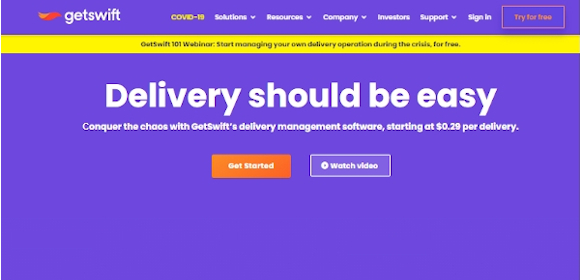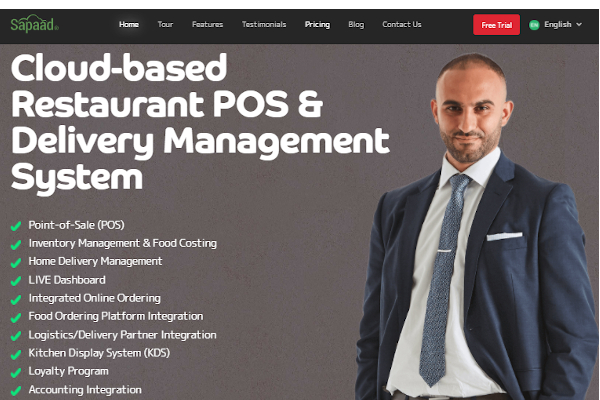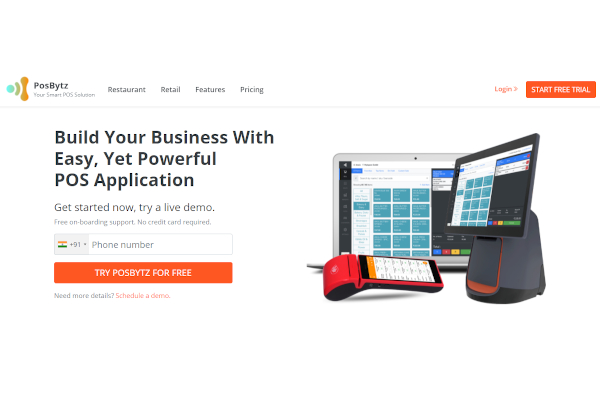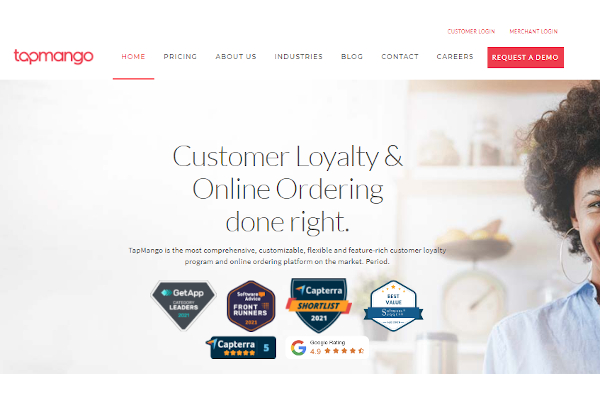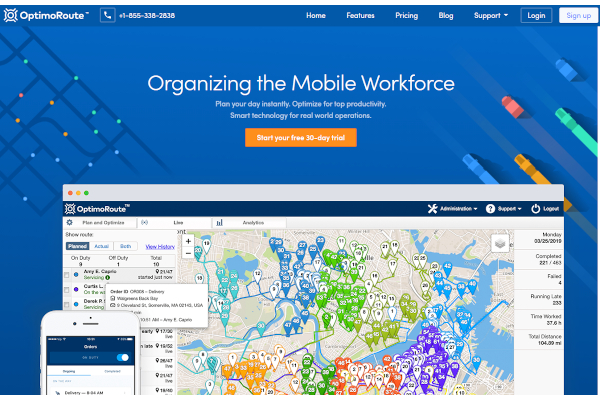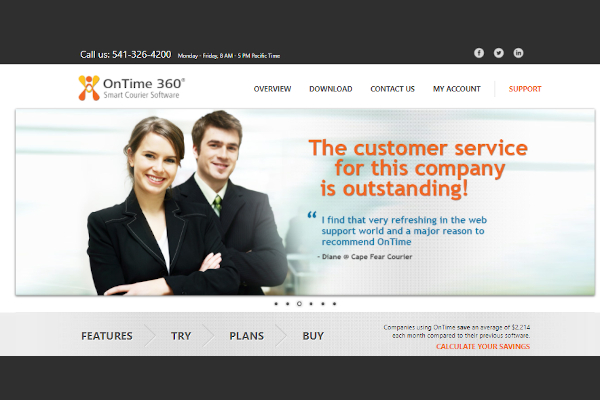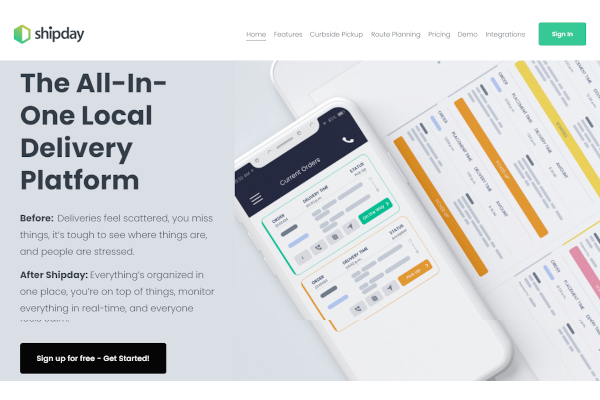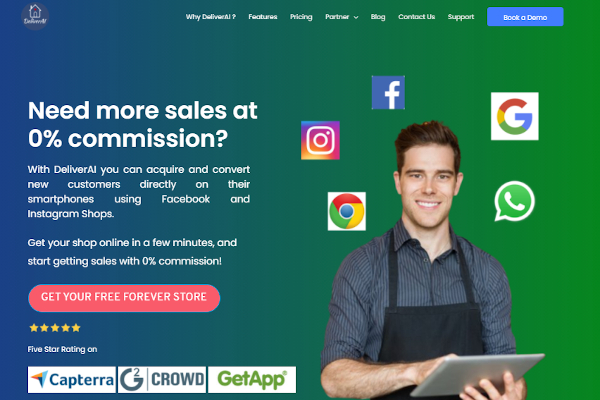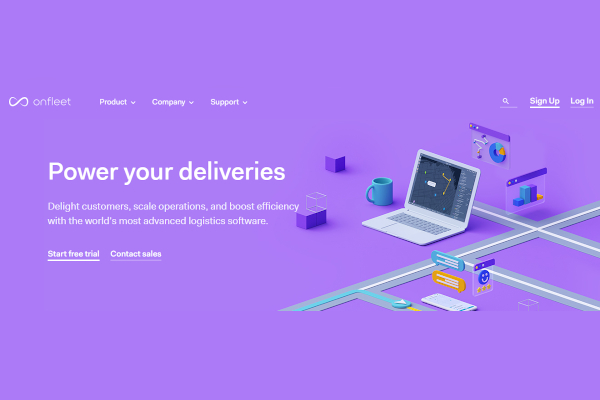There is nothing more satisfying than delicious food being delivered to our house. While restaurants are slowly opening up after months of closure due to the COVID-19 pandemic, many customers are still hesitant to dine in as food delivery has become a more common, safer option to eat food from restaurant establishments. According to Ajot, online food delivery has brought in $151.5 billion in revenue with over 1.6 billion people using food delivery services.
Food delivery has proven itself to be a profitable market and restaurants must take advantage of this. Luckily, there are some useful food delivery software programs that can help restaurants streamline their food delivery process. Here are some of the best food delivery software in the market right now.
12+ Food Delivery Software
1. Sapaad
2. GOFRUGAL
3. PosBytz
4. Tookan
5. TapMango
6. OptimoRoute
7. GetSwift
8. OnTime 360
9. Zippykind
10. Shipday
11. DeliverAI
12. Flipdish
13. Onfleet
What Is Food Delivery Software?
As the name implies, food delivery is a kind of service from restaurants to provide food to customers at the comfort of their own homes. Traditionally, this was done through the telephone where customers call the restaurant to make an order. Nowadays, food deliveries can be done online through a restaurant’s website or app. While this may be a convenient option for restaurants, maintaining a food delivery system can be a challenge.
There are things to consider as restaurants need to figure how to simultaneously take in orders from dine-in and delivery customers without overwhelming the employees. Food delivery software aims to help restaurants streamline and smoothen their own food delivery system through a point-of-sale (POS) software set-up where all orders can be managed from a single, cohesive system.
Benefits
Setting up a food delivery system attracts new customers as they get the chance to order some new food without having to step inside the restaurant. It also helps maintain a stronger relationship with loyal customers who can have more options in getting their food. It also gives these kinds of customers peace of mind that they can safely order and eat delicious food at their homes during the pandemic. Additionally, establishing a food delivery system makes the process of taking orders more work-efficient and less time-consuming.
Restaurants can also use food delivery systems to know their customers more such as their address and average time of order through data center management. This will give restaurants an idea of how to better enrich their customer service in the future. While maintaining a food delivery system may cost more, it will surely become profitable and bring in so much revenue in the long-run.
- Attracts new customers and strengthens relationships with loyal customers
- Taking orders is more efficient and less time consuming
- Restaurants get to know their customers more through data
- It brings in more revenue and provides profit in the long-run
Features
Food deliveries usually operate through a POS system where aorder information are stored into a single dashboard, which makes tracking orders easy and streamlined. Food delivery software should integrate customer communication through text messaging or push notifications to update customers about their orders. If possible, they should be able to have an accurate location of their customers through GPS tracking so delivery drivers won’t get lost during transit. To boost more customers, food delivery software should be able to generate new discount codes and coupons at the discretion of the restaurant management.
Food delivery software should also provide many common payment channels for customers to choose from, whether it’s on a cash on delivery (COD) basis or paid through a credit card. While not a requirement, it’s beneficial for food delivery software to be integrated into social media as a way to market the restaurant to a wider audience.
- A point-of-sale system where order information is stored in a single dashboard
- Communicate with their customers through automated SMS or push notifications
- GPS tracking, if possible
- An integrated rewards initiative program
- Providing available payment channels
- Social media integration
Top 10 Food Delivery Software
1. GetSwift
GetSwift caters to all types of businesses with their seamless 4-step delivery management software that smoothly cooperates with every restaurants’ delivery system. It was founded in 2013 with 37 employees.
2. Tookan
Tookan offers tailor-made delivery solutions to several businesses including the food delivery industry with auto-delivery dispatching and real-time delivery tracking. The company was founded in 2016 with 40 current employees and a $2 million annual revenue.
3. Flipdish
Flipdish provides simple food delivery tools and innovative devices that help grow restaurants’ businesses. It was founded in 2015 with currently 202 employees and annual revenue of $27.6 million.
4. Gofrugal
GOFRUGAL promises their restaurant clients “100% reliable, accurate solutions’ ‘ with less effort with simple, yet “frictionless” tools and services that will grow the businesses of their clients. The company was launched in 2004. The company has 350 employees and earns annual revenue of $61.3 million.
5. Sapaad
Sapaad is a cloud server-based service that gives their restaurant clients peace of mind with their low-cost, no-IT involvement, tailored tools, and services.
6. Zippykind
Zippykind helps small businesses with an easy, yet powerful 4-step food delivery system with tools such as an integrated rewards system and real-time tracking system. The company was founded in 2016 and currently has 36 employees.
7. PosBytz
Founded in 2017, PosBytz’ all-in-one point-of-sale system helps restaurant clients with the tools they need to streamline their restaurant business, including food delivery services.
8. Onfleet
Onfleet ensures its clients with tools that deliver the best customer service. Founded in 2012, it has currently 49 employees and earned a revenue of $9.7 million in 2020.
9. OptimoRoute
OptimoRoute gives their clients organized-based tools that ensure top productivity for their restaurant clients. The company was founded in 2012 and has currently 29 employees.
10. Shipday
Shipday helps their small business restaurant clients with an easy delivery system that includes tools such as real-time tracking, automated dispatching, and customer communication.
FAQs
What is a point-of-sale (POS) system?
A point-of-sale (POS) system is a point during a transaction when a customer has completed the transaction by purchasing its services or products and the business establishment gives them a receipt of purchase. According to Software Advice, there are two types of POS; On-premise POS and Cloud POS. Many food delivery systems use a cloud POS as customers make their orders online and the restaurant receives these orders right away. The workforce to maintain this POS is minimal, making collaboration with the food delivery software essential for restaurants to make their business work-efficient.
Do restaurants need to establish a star review rating system in their software?
It depends on the restaurant whether it’s appropriate for their brand to open up public consumer feedback on their own software. On one hand, it’s a way for restaurants to promote themselves through positive customer experience testimonies and customers will have a better idea of the most popular dishes through ratings. However, negative reviews may discourage customers from ordering from the restaurant. As this is not required, it’s up to the discretion of the restaurant management whether they want to make consumer feedback available to post or not.
How can a rewards system from food delivery software be beneficial to restaurants?
Establishing a rewards system in businesses is one way to create loyal, frequent customers, which is good for business. Some food delivery software has this service integrated into their operations so restaurants should take this opportunity to create a rewards program for their frequent customers. Restaurants can also use the food delivery software to generate coupons and discount codes.
With the food delivery industry being a growing industry with so much profit to generate, restaurants should use food delivery software to help them streamline their food delivery systems. Some software may even go through the lengths to overhaul and simplify their business operations for a maximized, efficient work operation.
Related Posts
10+ Best Chemical Software for Windows, Mac, Android 2022
12+ Best Vulnerability Scanner Software for Windows, Mac, Android 2022
4+ Best Bundled Pay Management Software for Windows, Mac, Android 2022
10+ Best Trust Accounting Software for Windows, Mac, Android 2022
10+ Best Patient Portal Software for Windows, Mac, Android 2022
13+ Best Virtual Reality (VR) Software for Windows, Mac, Android 2022
12+ Best Bed and Breakfast Software for Windows, Mac, Android 2022
15+ Best Resort Management Software for Windows, Mac, Android 2022
14+ Best Hotel Channel Management Software for Windows, Mac, Android 2022
12+ Best Social Media Monitoring Software for Windows, Mac, Android 2022
10+ Best Transport Management Software for Windows, Mac, Android 2022
10+ Best Other Marketing Software for Windows, Mac, Android 2022
10+ Best Top Sales Enablement Software for Windows, Mac, Android 2022
8+ Best Industry Business Intelligence Software for Windows, Mac, Android 2022
10+ Best Insurance Agency Software for Windows, Mac, Android 2022
